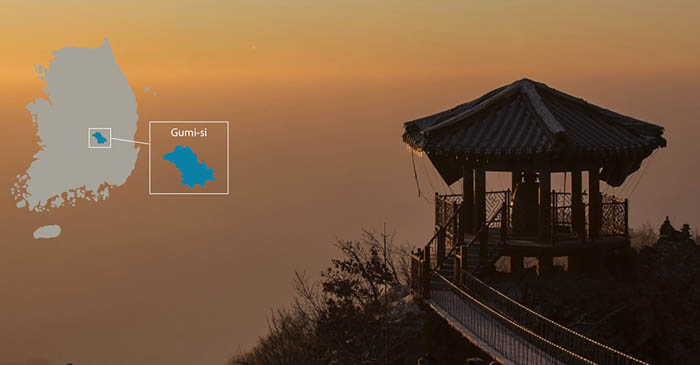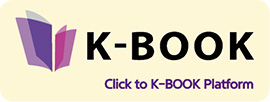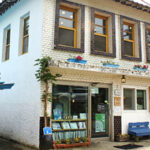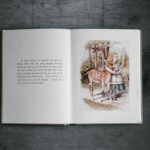
The city of Gumi, or Gumi-si, lies in the interior of Gyeongsangbuk-do and is the birthplace of Korean industrialization. It has developed into a rapidly growing industrial city. However, with stagnant growth today, Gumi is looking to construct a new picture. It is preparing to leap forward as a cultural city, freeing itself from its existing image. The so-called Geumridan-gil is rising with workshops of different sizes, cafes with unique concepts, and distinctive independent bookstores, based on the urban regeneration project that started in the old town around Geumosan Mountain, the long-time landmark and the resting place for Gumi citizens. The Geumosan Provincial Park, as wide as 976m, is a representative tourist spot in Gumi, which boasts various trails around the lush forest by the entrance, hiking courses, and Chaemijeong, which was built to honor the fidelity and studies of Gil Jae (Korean scholar-official of Goryeo). Furthermore, the bookstores of Gumi add joy to a more colorful journey by supporting the image of the city as a cultural city.
A Cultural Space that Connects People and Books: Samilbooks
Samilbooks (“sam” which means three, and “il” which means one) was named to symbolize the trinity of company, staff members, and society while embodying the meaning of the March 1st Independent Movement in Korea to exhibit its identity as an independent bookstore. As a cultural space representative of the region, it has been just five years since its opening. Yet, the reason behind the bookstore becoming the best place in Gumi for the residents to become friends with books at ease is the particular efforts of the manager. While Samilbooks put up the motto of “connecting people and books,” it hoped to provide a chance for people to become friendlier with books and use them to find their path in life. Through its book spaces and various book curations, the bookstore has endeavored to become a bookstore that sympathizes with residents and offers various programs for them.
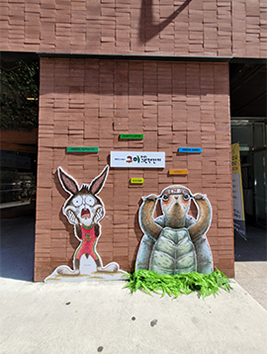
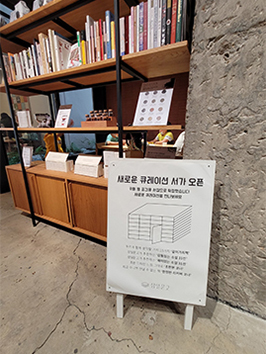
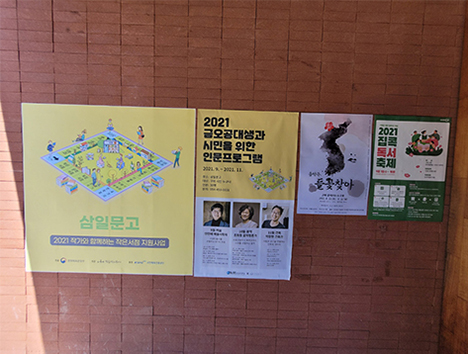
Samilbooks’ efforts to best serve its role as a complex cultural space instead of a store that simply displays and sells books have borne fruit, rejuvenating the regional economy. As more people came to Samilbooks for the opportunities it offers them to get closer with books through various curations that stimulate curiosity as well as book-based experience programs, the old town that was losing steam began to gain energy again, which after all led the local government to come up with an urban regeneration project. Thus, the dream of the bookstore, which pursued the sustainable growth of books and people, has begun to become a reality.
In particular, Samilbooks receives sponsors from local companies, and hosts a book festival with other small independent bookstores in town every year. This festival encourages local residents’ participation by running programs that show distinctive features of each independent bookstore and invites authors for lectures. Even though the size has been cut down due to the pandemic, the bookstore aims to make it a national festival once things get better. Apart from this, Samilbooks fulfilled its role in the region, hosting various programs to become the cultural center. It runs programs about humanity by cooperating with universities in the region, collaborates with the nearby police station to develop a way to use books to guide juvenile delinquents, and steadily opens writing or poetry-reading meetings.

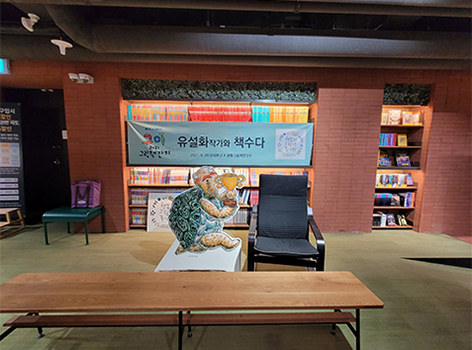
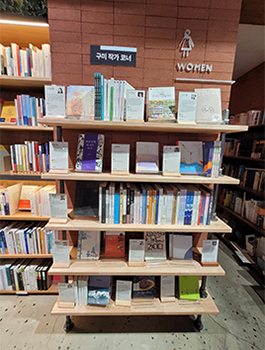
It is the objective of Samilbooks to develop as a place that stimulates the sentiment and intelligence of people, being the center of diversity. Its thoughts about what the readers can experience at the bookstore, and efforts to become the place that offers such experiences, drawing a better path in life for them, are ripening even now.
A Place where People Lead a Life Through Books: Chaegbom
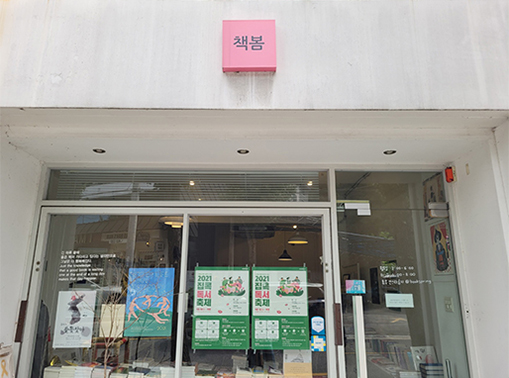
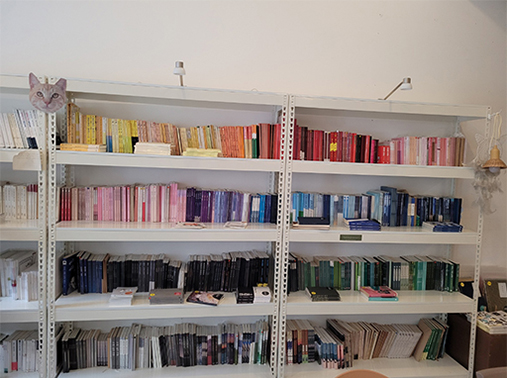
The bookstore’s name “Chaegbom” is a compound word of “chaeg” which means books, and “bom” which means to read in Korean. It also means “bookstore in spring,” where beautiful cherry blossoms bloom near the bookstore, as “bom” also means spring in Korean. Showing the clear preference of the manager, a majority of books exhibited in Chaegbom are on the environment and animals. The bookstore is filled with books chosen by the manager, who is said to have taken an interest in animals, the environment, and earth, after beginning to live with a stray cat. It’s also fun for visitors to enjoy discovering books that can hardly be found in other places, such as Flight Log of Random Days (Go Around), Breathe In, Breathe Out (Siwaseo), The Era of Elegant Poverty (Unusual), and The Paper Menagerie and Other Stories (Goldenbough).
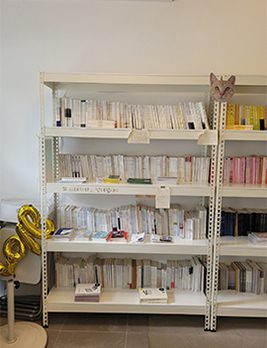


On top of the uniqueness of its genres, the books displayed in Chaegbom are different in size, shape, and texture, which offer a good visual tour in the bookstore. Most of them are those the manager likes or is interested in or those published by single-person publishers or individuals. Thus, both visitors and the manager share a lot in common in terms of preference. They get closer through meetings such as book talks and say hi to each other when coming across each other in town. As neighbors, they hike, jog, or even contribute to the environment by plugging (picking up trash + jogging). As the bookstore provides a book subscription service, they also have debates on animals and the environment. This, in short, means that Chaegbom has become a hub in the neighborhood through books. Chaegbom’s manager hopes to show the competitiveness of independent bookstores by selling many books, while it mainly covers books that can only be found in Chaegbom or those that are not mainstream. I hope that someday Chaegbom’s dream will come true, where bookstores and writers are economically abundant and where readers have more joy.
Where Children and Adults Find Happiness in Books: Walk Picturebook
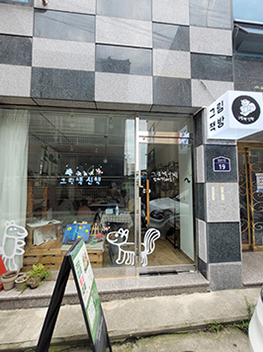
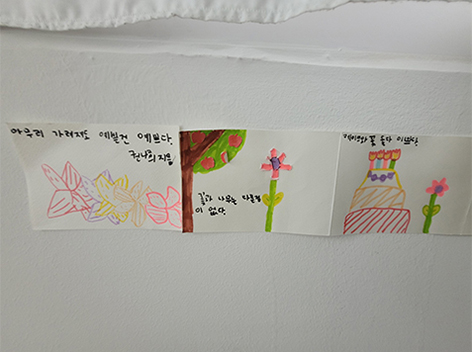
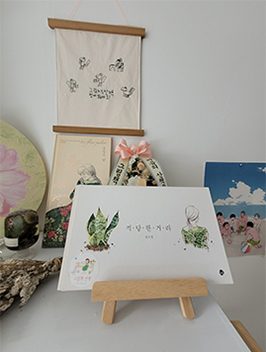
Located in a small, friendly alley named Geumridan-gil, Walk Picturebook was named after the hope of the manager, where she wanted people to have a healing time by reading books just like having a good walk. Walk Picturebook started with a mom’s wish to read better picture books to her child. While she was looking for good picture books, she encountered many of those that were for adults. And as she was participating in programs that read picture books for adults at Chaegbom, she decided to open the bookstore to promote picture books at full scale. At Walk Picturebook, you can feel like having a walk inside picture books just by looking around inside, as beautiful pictures and quotes are decorated in parts of the bookstore as if they popped out of picture books. By reading picture books together in Walk Picturebook, children have dreams, and adults heal their spirits. It is the space where picture books make people happy.
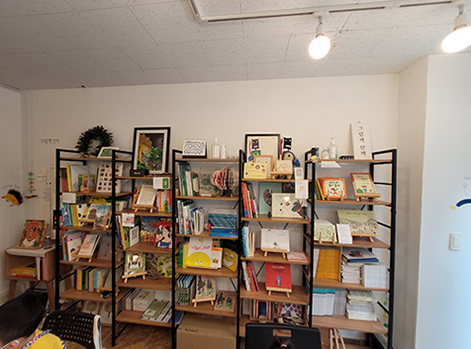
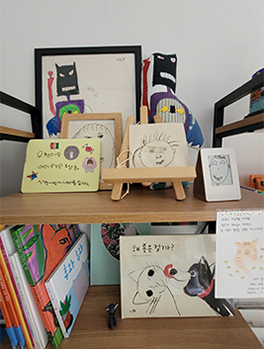

Walk Picturebook is a bookstore specializing in picture books that delivers the message that anyone, no matter their age, can enjoy reading picture books. Children grow up here reading books together, watching picture books in video format, and making picture books based on their ideas. Adults open picture books they have been away from for a long time and heal their minds, once again getting closer to the books. Founded in 2018, Walk Picturebook has been providing a special time for everyone just like that, sending them on a walk inside picture books. Also, it has been hosting lectures for children and adults to befriend picture books by inviting writers, opening various events with workshops in the alley, and running a “culture day.” I wonder what Walk Picturebook will do next, as it hopes to seek ways to coexist with other stores in the alley while turning into a cultural space that does small but meaningful activities related to picture books.
Written by Kim Young-Ihm
